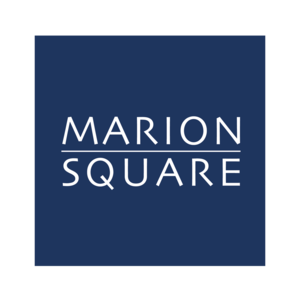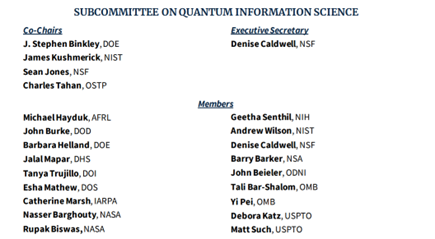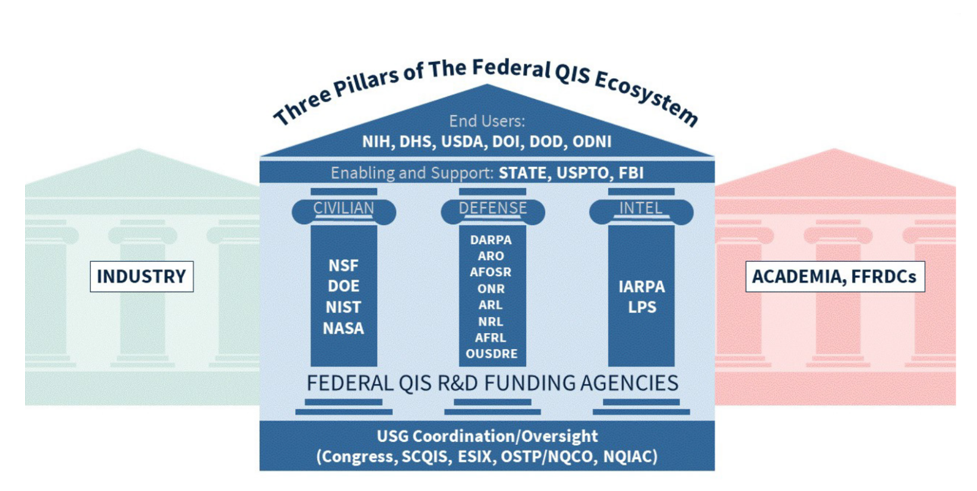Quantum Information Science (QIS) Federal Market Overview
Market Highlights:
Specific Agencies are funding R&D efforts in Quantum Information Sciences (QIS)
At this point R&D funding is the primary funding for QIS, largest agency budgets for QIS research include DoD, DOE, NIST, and NSF
Funding has increased since the launch of the National Quantum Initiative Act in 2018- $400M in FY 19 and $900M in FY 23
Post Quantum Cryptography is becoming a focus area with the release of May 22nd National Security Memo- initial standards are being released by NIST.
QIS in the Federal Government:
Quantum Information Science (QIS): is a unification of quantum mechanics and information theory — two foundational fields underpinning modern technology — that could yield transformative new types of computers, sensors, and networks, with the potential to improve the Nation’s prosperity and security.
Quantum Information Science Federal Ecosystem:
National Science and Technology Council (NSTC): National Science and Technology Council (NSTC) | OSTP | The White House is the principal means by which the Executive Branch coordinates science and technology policy across the diverse entities that make up the Federal research and development (R&D) enterprise. NSTC supports National Quantum Initiative Act- passed in 2018.
National Quantum Initiative Act:
Signed in 2018 with the objective to accelerate American leadership in QIS technology. The NQI Act authorizes U.S. Federal departments and agencies (hereafter, “agencies”) to establish centers and consortia and carry out new programs to foster QIS research and development (R&D). The NQI Act also calls for coordination of QIS R&D efforts across the Federal Government, as well as with industry and the academic community. The US Government is signaling its future cyber priorities with a recently released OMB Memo M-23-18 "The Administrations Cyber Priorities for FY 25" M-23-18 (whitehouse.gov). The memo instructs Federal Agencies to prioritize budgeting/funding around key the key initiatives specifically outlined within the memo. In reading the memo, one will notice that several of the priorities are a continuation of funded initiatives that are currently going through the budget approval process as part of the FY24 budget.
Note: Key agencies represented in the Governing body: NIST, AFRL, DOE, NASA, USPTO, DOI and DOS
Note:
Agencies specifically designated as funding agencies for Quantum Information Science research and development. When assessing the market and researching funding opportunities organizations should focus on these key agencies.
The National Quantum Initiative Act categorizes Quantum into the following Program Component Areas:
1. Quantum Sensing and Metrology (QSENS) refers to the use of quantum mechanics to enhance sensors and measurement science. This can include uses of superposition and entanglement, non-classical states of light, new metrology regimes or modalities, and advances in accuracy and precision enabled by quantum control, for example, with atomic clocks.
2. Quantum Computing (QCOMP) activities include the development of quantum bits (qubits) and entangling gates, quantum algorithms and software, digital and analog quantum simulators using programmable quantum devices, quantum computers and prototypes, and hybrid digital-analog computing, as well as quantum-classical computing systems.
3. Quantum Networking (QNET) includes efforts to create and use entangled quantum states, distributed over distances and shared by multiple parties, for new information technology applications and fundamental science; for example, networking of intermediate-scale quantum computers (modules) for enhanced beyond-classical computing capabilities.
4. QIS for Advancing Fundamental Science (QADV) includes foundational efforts to invoke quantum devices and QIS theory to expand fundamental knowledge in other disciplines; for example, to improve understanding of biology, chemistry, computation, cosmology, energy science, engineering, materials, nuclear matter, and other aspects of fundamental science.
5. Quantum Technology (QT) catalogues several topics: work with end-users to deploy quantum technologies in the field and develop use cases; basic R&D on supporting technologies for QIS engineering, e.g., infrastructure and manufacturing techniques for electronics, photonics, and cryogenics; and efforts to understand and mitigate risks raised by quantum technologies, e.g., post-quantum cryptography.
Highlighted Funding Requests FY 24:
Funding for Quantum R&D in the FY 2024 Budget Request | GovWin IQ
Department of Energy (DOE)
The Office of Science at DOE requests a $280M total for QIS in FY 2024, including:
Support for the National QIS Research Centers (NQISRCs) with $150M in FY 2024, a $41M increase over FY 2023. Funding will go towards quantum computing testbed efforts, research on sensors and quantum simulators, and regional quantum internet testbeds
Support for high energy physics QIS consortia with $51M
Support for core research awards in QIS selected in FY 2023 with $10M in FY 2024
National Science Foundation (NSF)
NSF’s total budget for QIS is $333M to continue spearheading the innovation of quantum computing, communication, sensing and networking. The breakdown of this funding includes:
$138M in foundational QIS advances
$55M in quantum computing
$42M quantum networks and communications
$37M in quantum sensing and metrology
DOD: Defense Advanced Research Projects Agency (DARPA)
Invests $20M to create and perform predictive and scalable benchmarks to quantify quantum computers
Provides $15M to verify and validate component and sub-systems requirements to achieve utility scale quantum computing
Funds the Quantum Apertures program with $12M to develop novel radio receiver and aperture systems using quantum sensors
Commerce: National Institute of Standards and Technology (NIST)
Provides NIST with $5M to advance research for QIS
Funds NIST with $6.2M towards Fundamental Measurement, Quantum Science, and Measurement Dissemination
Though the FY 2024 budget request sees several investments in advancing quantum computing R&D, contractors will begin to see funding and needs in cyber budgets for PQC transitions as early as FY 2025.
Post Quantum Cryptography:
May 2022 National Security Memo: highlights specifically: to mitigate the threat of cryptanalytically relevant quantum computer (CRQC) through a timely and equitable transition of the Nation’s cryptographic systems to interoperable quantum‑resistant cryptography.
NIST eyes summer release of first post-quantum cryptography draft standards | InsideCyberSecurity.com- highlights 4 Post Quantum Encryption Standards: The upcoming draft publication follows the selection of four quantum-resistant cryptographic algorithms for standardization in July 2022 –
CRYSTALS-KYBER, -“were both selected for their strong security and excellent performance, and NIST expects them to work well in most applications,”
CRYSTALS-Dilithium, -“were both selected for their strong security and excellent performance, and NIST expects them to work well in most applications,”
SPHINCS+
FALCON.
White House PQE Directive for FY 24: OMB, NCD Walden issue memo outlining fiscal 2025 priorities for agencies in alignment with national cyber strategy | InsideCyberSecurity.com highlights the directive for meeting federal requirements to invest in quantum computing and the migration to post quantum cryptography.



